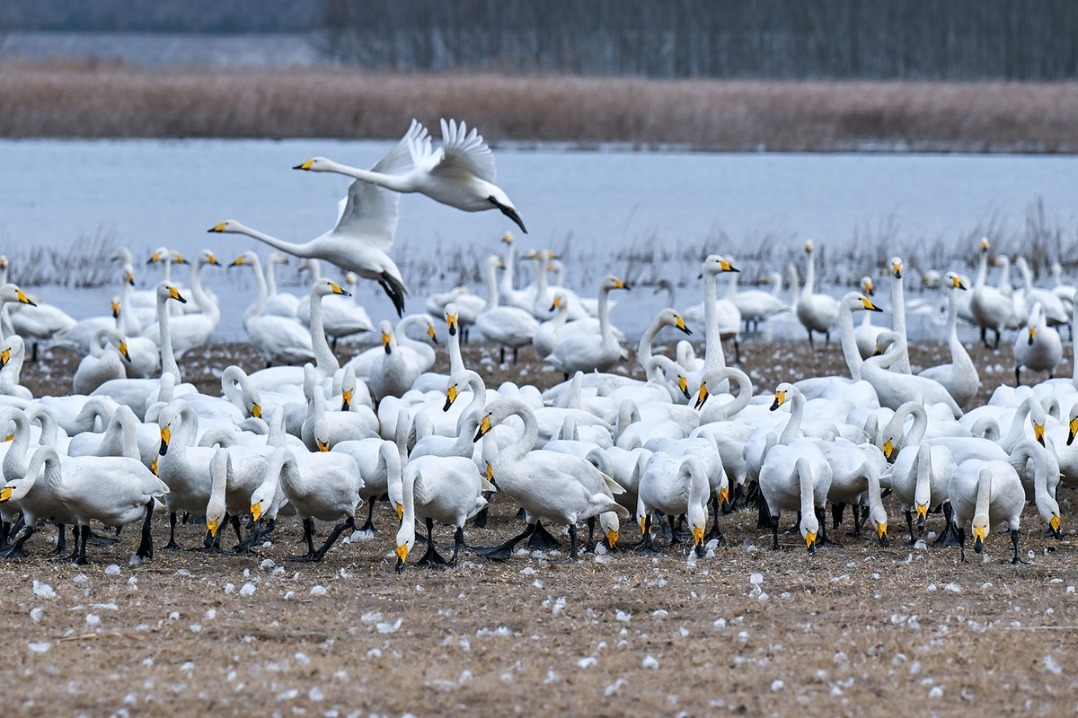Research on swifts protects local bird


Beijing swifts fly about 14,000 kilometers from Beijing to southern Africa and then return every year, according to a recent study that focuses on their annual migration routes and preferred habitats, which include a love of staying in semi-arid places.
Liu Yang, the corresponding author of the research paper, said that more understanding of the bird can help protect it.
The paper was published in the journal Movement Ecology on June 29.
Using geolocators, researchers from the Beijing Normal University and the Sun Yat-sen University in Guangzhou, Guangdong province, studied the migration of adult swifts breeding in Beijing from 2014 to 2018, and analyzed full annual tracks obtained from 25 birds.
Experts from Sweden, Belgium and the United Kingdom also took part in the research. Volunteers from Beijing Bird-watching Society contributed to the field work of banding the birds.
The research showed that around mid-July after breeding, Beijing swifts left Beijing for Mongolia and then flew westward. After that, they re-entered China, passing through the northern Xinjiang Uygur autonomous region and entered Central Asia through the Junggar Basin.
From Central Asia, the swifts migrated to northeastern Africa with three main stopovers explored in this region, two major ones being the south coast of the Caspian Sea and the southwest coast of the Red Sea.
They crossed the Red Sea before reaching the eastern Congo Basin in early September, where they remained for around a month before slowly moving to the Southern African Plateau around November. The swifts stayed at the plateau for about 100 days before moving northeast around February back to Beijing.
Compared with its European counterparts, the Beijing swifts experienced more arid environmental conditions and habitats during non-breeding periods, the research showed.
This pattern might indicate that Beijing swifts, the subspecies pekinensis of the common swift, have adapted to exploring arid regions at certain stages of their annual cycle, the research said.
Liu, the author and also professor of life sciences at Sun Yat-sen University, said, "Their route is not straight from north to south, nor is the south-north one. It resembles a big parabola. A hypothesis considers that about 10,000 to 20,000 years ago, the earth experienced a long glacial period, so Beijing and some other places at higher latitudes were too cold for swifts who like warmth and feed on bugs to survive.
"As our planet is getting warmer, the swifts expanded their routes from Africa and surrounding regions gradually toward the north. The current routes formed as swifts followed the historical ones taken by their ancestors," he said.
Inspiring one of the 2008 Beijing Olympics mascots "Nini", the Beijing swift is a symbol of the city.
People like to see them fly, and protection requires us to know more about them, Liu said.
The Beijing swift was named after the capital city because British naturalist Robert Swinhoe spotted and recorded the bird there in the 1800s.
Beijing swifts nest in caves and in the crevices of buildings. They especially like to build nests on tall ancient buildings. That's why they are mostly seen around Tian'anmen Square, the Summer Palace and other old buildings, Liu said.
"The number of swifts has decreased sharply in the past 20 years mainly due to fewer breeding spaces.
"As the city developed, the number of skyscrapers soared. To prevent bird droppings from eroding ancient buildings, administrations have set up nets under the eaves, which also prevents swifts from nesting there.
"We hope that our research can arouse people's interests in Beijing swifts so that the city can be made a more hospitable place for them," he said.
- Shanxi ends province-wide blanket fireworks ban
- Audit: China fixes bulk of fiscal problems tied to 2024 budget
- China reports major gains in circular economy
- Chinese lawmakers review draft revision to banking supervision and regulation law
- Top legislature to study draft laws on environment, ethnic unity, national development planning
- Administrative organs must secure people's interests: senior judge





































